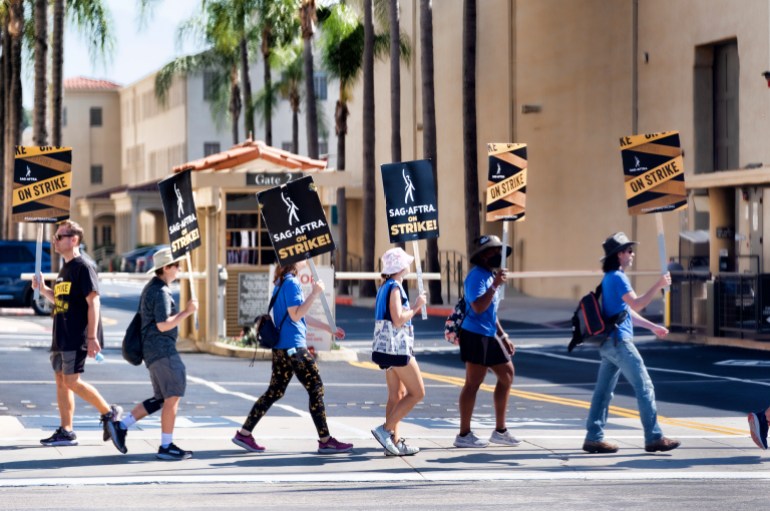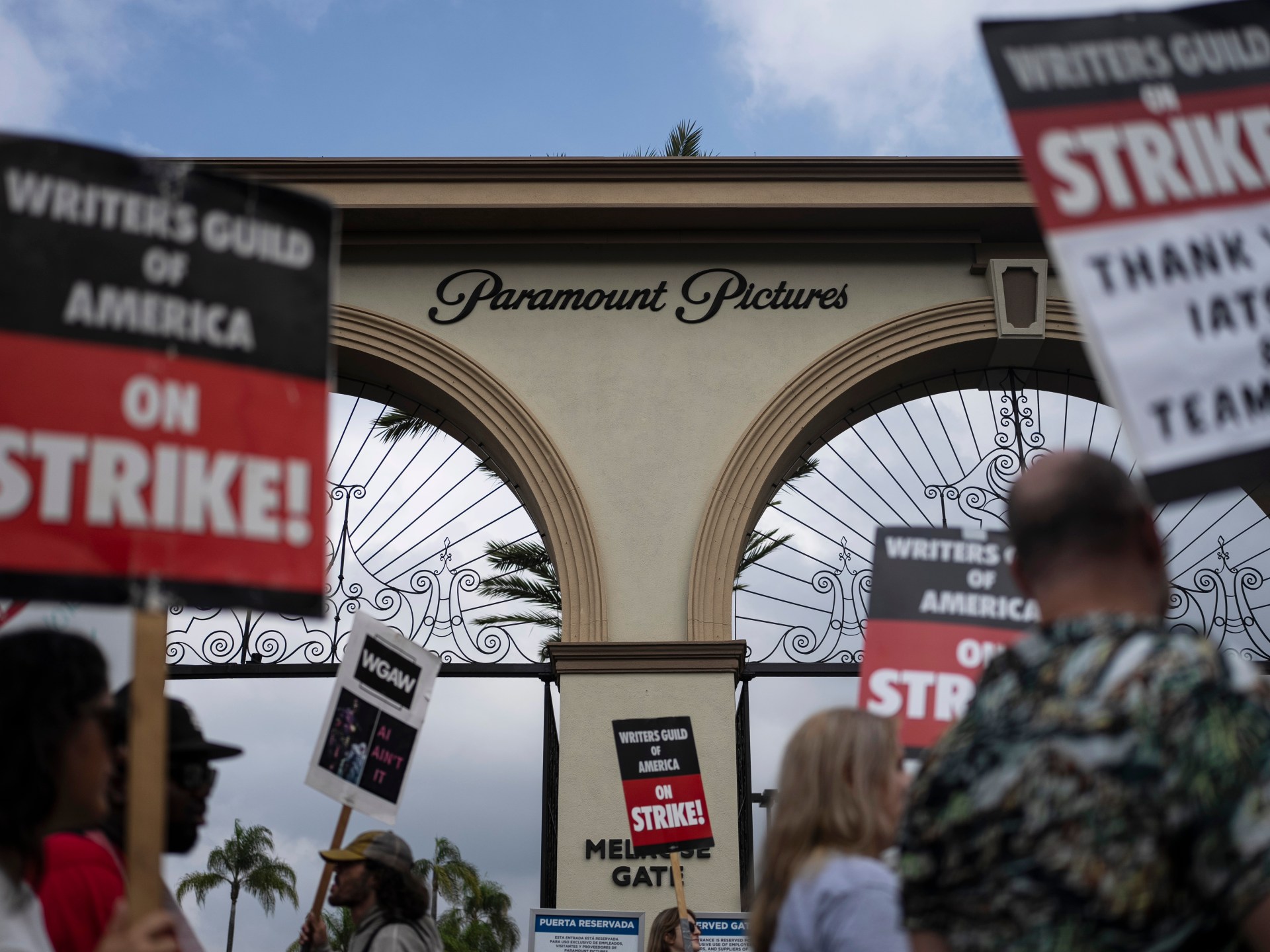The Hollywood writers’ union has said its members can begin to return to work, ending a five-month strike that drove production in the United States entertainment industry to a grinding halt.
The work stoppage officially ended just after midnight on Wednesday (07:01 GMT), the Writers Guild of America (WGA) said, with writers permitted to return to work.
However, the 11,500 members of the union still need to vote on a deal reached between their leadership and production heads. That vote is set to take place between October 2 and 9.
Still, the preliminary deal largely showed major gains for writers, who sought commitments to respond to an industry that has been transformed by streaming platforms and that faces the prospect of further upheaval amid the rise of artificial intelligence (AI).
Comedian Adam Conover, who became a leading figure in the strike, hailed the deal as a victory. “We won,” he wrote on social media on Tuesday.
David Slack, a union board member and television writer, added that the agreement heralds “a new era for writers – and for labour in our industry”.
Here’s all you need to know.
The details of the new Writers Guild contract are out. We won:
• Success-based residuals
• Strong limitations on A.I.
• Minimum writers room staffing
• Guaranteed compensation and 13-week minimums for Comedy/Variety writers in streaming
(cont)https://t.co/rI1pKWFh4u— Adam Conover (@adamconover) September 27, 2023
What’s in the deal?
The three-year agreement with studios, producers and streaming services contained significant wins for the writers in several key areas, including compensation, length of employment, size of staff and control of AI.
The writers’ union had pushed for minimum increases in pay and future residual earnings from shows from the outset of the strike, which formally began on May 2 and was initially dismissed by studio executives as unrealistic and based on false premises.
But the union said it had received widespread complaints about the ad hoc nature of the entertainment industry, which left many writers struggling between gigs with little in the way of residuals to fall back on.
Under the new agreement, writers will get a raise of between 3.5 percent and 5 percent in both pay and residuals earnings.
The guild also negotiated a new residuals payment structure based on the popularity of streaming shows; writers will get bonuses for being part of the most popular shows on Netflix, HBO Max and other services, a proposal studios initially rejected.
What about AI?
The deal also seeks to address the ways in which AI could transform the entertainment landscape, particularly fears the technology could be used to replace various creative roles held by writers. Again, the writers had their demands largely met.
Under the agreement, raw, AI-generated storylines will not be regarded as “literary material” – the term used for scripts and the other story forms screenwriters produce.
That means writers won’t be competing with AI for credits.
The deal also prohibits AI-generated stories from being considered “source” material. This is the contractual term for the novels, video games or other works that writers may adapt into scripts.
While companies are not barred from using AI to generate content, under the deal, writers have the right to sue if their work is used to “train” AI to produce similar material. Companies will also be prohibited from requiring writers to use AI, although writers can use the technology in their work if terms are agreed upon with their employer.
The WGA reached a tentative agreement with the AMPTP. Today, our Negotiating Committee, WGAW Board, and WGAE Council all voted unanimously to recommend the agreement. The strike ends at 12:01 am. Check out our deal at https://t.co/c0ULMXhPL7. #WGAStrong pic.twitter.com/7z8kw9xI1p
— Writers Guild of America West (@WGAWest) September 27, 2023
Who’s heading back to work?
The new deal paves the way for popular US late-night talk shows to return to television. Such shows, which rely heavily on writers and often air live or shortly after production, were among the first affected by the strike.
Early on Wednesday, host Bill Maher announced that his show would be back on air as of Friday.
“My writers and ‘Real Time’ are back! See you Friday night!” he posted on social media.
NBC’s The Tonight Show Starring Jimmy Fallon and Late Night with Seth Meyers; ABC’s Jimmy Kimmel Live, and The Late Show With Stephen Colbert on CBS all shuttered at the beginning of the strike and were expected to resume in the coming weeks.
Scripted shows, however, were expected to take longer to return, with actors still on strike and no negotiations yet on the horizon.
Why are actors still striking?
The Screen Actors Guild (SAG) has not called off an ongoing strike by its 160,000 members, who include television actors, stunt performers and other media professionals.
Observers have said the writers’ union breakthrough will incentivise speedy negotiations, but a resolution is still expected to take at least a month.
SAG members have lodged demands similar to the Hollywood writers, including higher wages, better residual pay, and protection against AI.

Will the writers’ deal have other implications?
Some have argued the Hollywood writers’ strike could be a blueprint for other industries in which AI is set to have a transformative effect.
As Yvonne Abraham, a columnist at The Boston Globe, noted in July, several economists have argued that AI is most likely to uproot the lowest-paid workers, in turn increasing social inequality.
Meanwhile, with the US grappling with an ongoing worker shortage, employees may move to increase leverage to negotiate.
“That’s why, even if you’re not a TV person, the protests by actors and writers in Hollywood are relevant to your life and future: If they can hold off the devastating effects of AI, there might be hope for the rest of us,” Abraham wrote.
Sumber: www.aljazeera.com
 Skip to content
Skip to content

